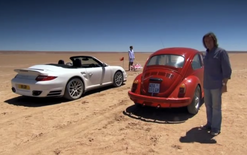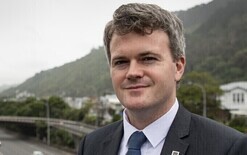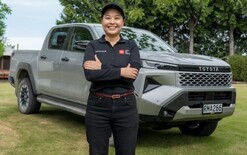Electric car targets ‘fantasy’

The Motor Trade Association (MTA) is calling for the implementation of the clean car standard to be delayed.
It has joined other key industry associations in projecting that the supply of electric vehicles (EVs) “simply isn’t there for Aotearoa to achieve government targets”.
Greig Epps, the MTA’s advocacy and strategy manager, says this means consumers looking to replace current vehicles with fresh imports in the future will have no choice but to turn to those with internal combustion engines (ICEs).
He adds it’s the latter that will incur penalties under the clean car standard, which forms part of the proposed clean-vehicle legislation before parliament.
The government is looking for the standard to be implemented from January 1, 2023, following a soft launch in 2022 and after the clean car discount becomes a full feebate scheme on April 1 next year.
The MTA has raised its concerns about the standard in its submission on the discussion document for an emissions reduction plan (ERP), which the Ministry for the Environment is looking to publish in May 2022.
The association says import penalties slated for the standard “will increase the price of ICE vehicles in the market”.
Epps, pictured, adds: “If this further suppresses demand for imports, many people will stay in old, carbon-emitting and unsafe cars for longer. They will be unable to switch to public transport because it’s simply not there.
“The biggest influence on achieving low-carbon goals will be consumer behaviour. We must ensure those unable to afford EVs or lower emitters are not stigmatised and targeted by those who can.
“We must also provide them with options to contribute to carbon reduction in their own way, such as a lower-emissions vehicle than their current car, or education and support to have their vehicles serviced to mitigate any emissions deterioration from age and wear and tear.”
It’s on this basis the MTA has recommended deferring the implementation of the clean car standard and “augmentation” of the demand-side boost with the feebate scheme.
The MTA adds it’s essential a support plan for a “just transition” be developed for businesses as well, which recognises risks posed to the supply chain by an ERP.
This is because New Zealand sources vehicles from offshore with time lags in the case of used imports, while “ICE solutions will remain the sole viable options for a long time, especially in industry and agriculture”.
Key recommendations
The MTA’s submission for the ERP makes many suggestions, some of which mirror those it made about the clean car policies.
On the technology front, the association says there should be no ban on ICEs, but “we should continue to leverage improvements in ICE drivetrain technology”.
Other disincentives, such as rising fuel prices – due to emissions trading scheme and/or biofuel components – and positive policies, such as better public transport, will help modify behaviour.
The MTA suggests emissions reductions from road transport should be encouraged by a mix of fuels and drivetrains, such as hybrids, plug-ins (PHEVs) and biofuel blends in the main fuel supply.
The government also needs to support the rollout of accessible and convenient charging infrastructure by location and with easy-to-use payment systems.
Consumer behaviour needs to be tackled by providing financing packages to support household uptake of low-emissions vehicles (LEVs), such as purchase support incentives and tax breaks.
Other suggestions include accelerated depreciation allowances for industry, government and rental fleets to boost supply of used EVs for household purchases, and differential road-user charges to incentivise LEVs.
When it comes to regulatory issues, the MTA urges the government to co-ordinate the timing of import restrictions on vehicles with the expected rollout of alternative transport options.
As for mitigating other risks, new technologies will require new skills and may draw new talent to the car industry.
Epps says: “The government should implement permanent support for firm-based training, such as Apprenticeship Boost, to facilitate more workplace training to service and repair the new-tech fleet.”
Nuts and bolts
The ERP discussion document poses questions to submitters, with the MTA taking this opportunity to flag up specific matters and policies.
A true partnership between government and business is needed to reduce New Zealand’s emissions, says Epps.
“SMEs will require a stable, predictable policy environment to enable investment to deliver on the country’s 2050 climate targets.
“For example, the service station sector faces a major financial barrier to investing in EV charging infrastructure.
“With the small number of EVs in the fleet now and no clear view on the size of the EV fleet past 2035, the sector may be reluctant to invest in charging facilities – assets that will need to provide ongoing value for more than 20 years.
“If this isn’t addressed, the service station sector will risk being lumped with stranded assets and will not be in a position to support the transition to low-emissions fuels.
“The MTA has welcomed government plans to invest in broadening the EV charging network. This needs to include more than one or two providers.”
The existing fleet should be a focus for the government, says the MTA. “An emissions testing regime for in-service vehicles will ensure drivers are better educated about emissions profiles and impacts of their vehicles.
“In MTA-commissioned research, 75 per cent of respondents didn’t know the level of their cars’ CO2 emissions and 39 per cent didn’t know where they would look for that information.
“All vehicles, new and used, will – over time – operate at levels below original manufactured specifications. Being aware of their actual levels of emissions is likely to impact consumer behaviour and guarantee reduction of carbon leakage.
“The first use of emissions testing should be education. As time goes on, the government might consider establishing an in-service emissions standard that triggers remedial actions when a breach is discovered at testing.”
Changes to the vehicle-inspection requirements manual could include the need to examine exhaust systems to ensure catalytic converters or diesel particulate filters are present and operating normally.
The MTA sees a role for biofuels and hydrogen fuels for future heavy-vehicle fleets.
“However, technology for green hydrogen is costly and not widely available. The future of production may rest with other industrial developments and climate-change actions, for example in agriculture, dairy and energy.”
A co-ordinated end-of-life waste programme for vehicle scrappage, which includes interlinking existing or to-be-developed waste management schemes and a financial incentive to owners to dispose of older vehicles, has been called for by the MTA for some years now.
It says this will refresh the fleet and “pragmatically substitute LEVs for poor-performing ICEs. Newer cars are safer. Younger used imports are safer. They are also cleaner.”
Epps explains: “A scrappage policy needs to be well-designed and considered in conjunction with in-fleet, age-appropriate emissions testing and limits.
“It can be an effective approach to support the uptake of more efficient vehicles. This aspect can be a viable incentive or disincentive lever for decarbonisation and safer travel.”
As for a target to reduce vehicle kilometres travelled (VKT) by the light fleet by 20 per cent by 2035 through providing better travel options, Epps describes this as “the wrong measure”.
“The government is trying to move New Zealanders to LEVs and change the way we travel. As people move to these vehicles, they will enjoy the benefits of lower cost operations and not necessarily reduce their VKT.
“The move to alternative vehicles is more likely to happen before the introduction of comprehensive public-transport systems that reduce travel people are doing in cars, however fuelled.”
And as for the proposal to make 30 per cent of the light fleet consist of zero-emissions vehicles (ZEVs) by 2035, the government needs to introduce “more realistic targets”.
“To achieve the targets if current numbers followed trend, the number of EVs required is fantasy – this needs to be acknowledged,” says Epps. “Supply of ZEVs is expected to remain scarce at least until 2025.”
Historically, the supply of battery EVs (BEVs) to New Zealand has primarily been via Japan’s used-import sector. The MTA stresses:
• BEV sales in Japan are minimal with typical annual volumes of about 20,000 in an annual vehicle market of close to four million.
• The opportunity to significantly increase used BEVs imported from Japan does not currently exist.
• In the past, New Zealand has taken around 50 per cent of all used BEVs exported from Japan.
• It is unrealistic to expect this country will be able to do much better given growing interest from many other countries in Japan’s zero-emissions stock.
The Climate Change Commission has recommended setting a time limit on light vehicles with ICEs entering, being made or assembled in New Zealand as early as 2030.
However, such a goal is opposed by the MTA because it believes the government must let the market take its course.
“Our view of impending supply constraints means it’s unlikely we will achieve EV uptake targets by 2030,” says Epps.
“If we were to stop importing ICEs from 2030 before we’ve been able to make a substantial impact on the fleet’s composition, people will continue to use existing ICEs and hold onto them longer.
“Furthermore, any discussion of a ban on ICEs while charging infrastructure is in its infancy and without a roadmap to mitigate homes without charging facilities is wishful and dangerous.
“The MTA believes measures to avoid Aotearoa becoming a dumping ground for high-emitting vehicles rejected by other countries are unnecessary. We will not become a dumping ground. New Zealand gets 95 per cent of its used vehicles from Japan. These are mainly smaller, more fuel-efficient vehicles.
“If we focus on demand incentives and follow through with existing workstreams on introducing Euro 5 and Euro 6 standards, we will find ourselves more in-line with overseas standards. Their ‘rubbish’ will not be fit to enter New Zealand. Nor will there be demand for it.”
Bigger picture
Overall, the MTA describes the discussion document for an ERP as “very high level and vague”.
Epps adds: “We need clarity and certainty on our next steps. There is no concrete detail in the proposals.
“Minister James Shaw has made numerous references for the ERP to be a ‘co-designed’ process as does the consultation document.
“However, this high-level discussion document appears to be the last opportunity for engagement before the final release of the ERP in May 2022. There is little to mention of what New Zealanders can do now to reduce emissions.
“The heavy reliance placed on the transport system means any transition must be practical, workable and fair for all.
“We must especially look at the existing fleet because this is the source of the bulk of our emissions. Tweaking the mix of vehicles coming in will only slowly move us towards better outcomes.
“The government has placed the onus on the motor industry to achieve emission reductions in five years that other countries have worked towards for more than 20 years. We need to be clear about the timing and implementation of all relevant policies to ensure a just transition to a low-carbon economy.”





